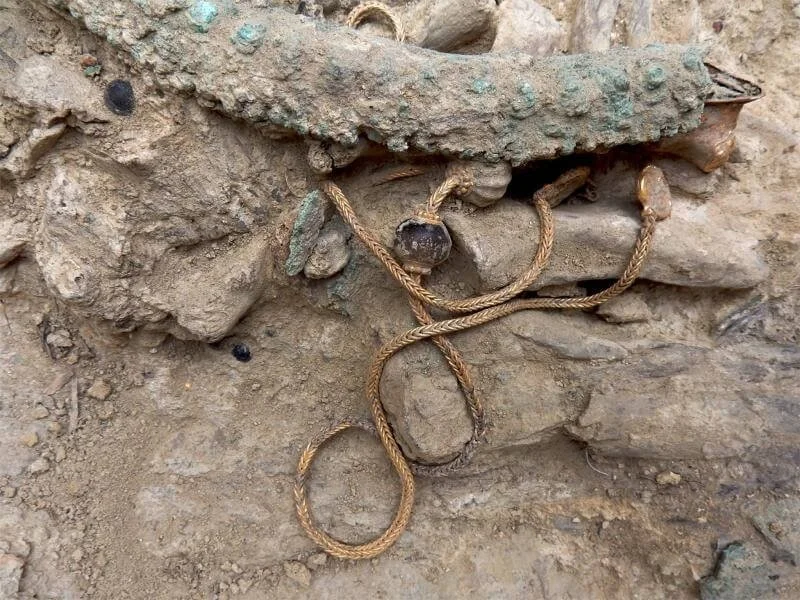An English teen's skeleton that was buried face down at the beginning of the ninth century in an apparent effort to fend off bad spirits has been found by archaeologists.
Archaeologists uncovered skeleton of ninth century teenager who had been buried with her face down
She was about 15 years old, and based on the location of her ankles, it's possible that she was bound.
When an early medieval hamlet was abandoned, she had been interred outside the enclosure; according to archaeological data, there had been no activity beyond the ninth century.
Her body was placed in the hole caused by the massive wooden posts of an imposing entrance gatehouse that was up to five meters tall. The peculiar burial indicates that this person was marginalized and shunned, possibly out of fear.
Specialist teams from the Museum of London Archaeology (MOLA) and Headland Archaeology have participated in excavations as part of the National Highways A14 Cambridge to Huntingdon Improvement Scheme.
According to Don Walker, senior human osteologist at MOLA, "This burial may be some way of trying to protect the living from the spirits of the dead or to stop the dead from returning into the world of the living."
Face-down burials were occasionally found during this time period, he claimed. Maybe this person was different, whether it was because they passed very suddenly, in an accident, via suicide, or even through murder. Or perhaps they deviated in some way from what was regarded as the standard.
The burial marks her out as different to other members of the community and how outsiders were dealt with in early medieval England
"Even though the kingdoms of England were Christian by the ninth century, burial in cemeteries connected to churches was not the norm," he continued. Although there were no established burial customs in early medieval England, one element of funerals during this time was that the deceased was placed face up.
"This young woman stands out as unique since she was found face down in a pit. It is believed that being buried face-down was a way for people to express their 'otherness' in society.
She was an Anglo Saxon descendant of migrants, most likely from south Scandinavia or the region currently occupied by Estonia, Latvia, or Lithuania, according to DNA testing. There was a lot of migration from those areas in the early medieval period.
The bones have been preserved incredibly well. Since there is no proof of a significant illness, she might have passed away abruptly or without warning. However, the investigation reveals that she had a difficult life. There is proof of childhood undernutrition as well as spinal joint dysfunction, which was unquestionably made worse by rigorous manual labor at a young age.
"It certainly seems that she didn't have a comfortable life," Mr. Walker said.
It's amazing what you can learn when you combine the data from the field team that discovered the skeleton with osteology, which involves examining the bones themselves, he continued.
The isotope evidence, which examines the strontium and oxygen isotopes in the teeth, informs us that she was raised in the neighborhood in Cambridge while the DNA indicates that her lineage was from southern Scandinavia or the Baltic. She wasn't a migrant herself, but she was the progenitor of migrants, so that tells us that. Therefore, that is truly impressive proof that we weren't aware of before.
A mock up depicting the settlement near Conington, in Cambridgeshire
Conington, which means "King's Town" in English, is one of numerous administrative hubs for the Kingdom of Mercia, one of England's early medieval kingdoms. It might have been abandoned as the kingdom started to wane in influence around the beginning of the ninth century.
If her burial coincided with the end of the colony, according to Mr. Walker, it might have served as the site's symbolic closing.
He thinks it was particularly significant because of its remote location beneath the old gatehouse: "There was some link there because it seems to have been the final action on the site. They buried him after demolishing the gatehouse.
The settlement from the Middle Ages appears to have had a sizable enclosure. He continued, "That would imply that it was relatively large for a rural area." Its gatehouse alone was significant.









